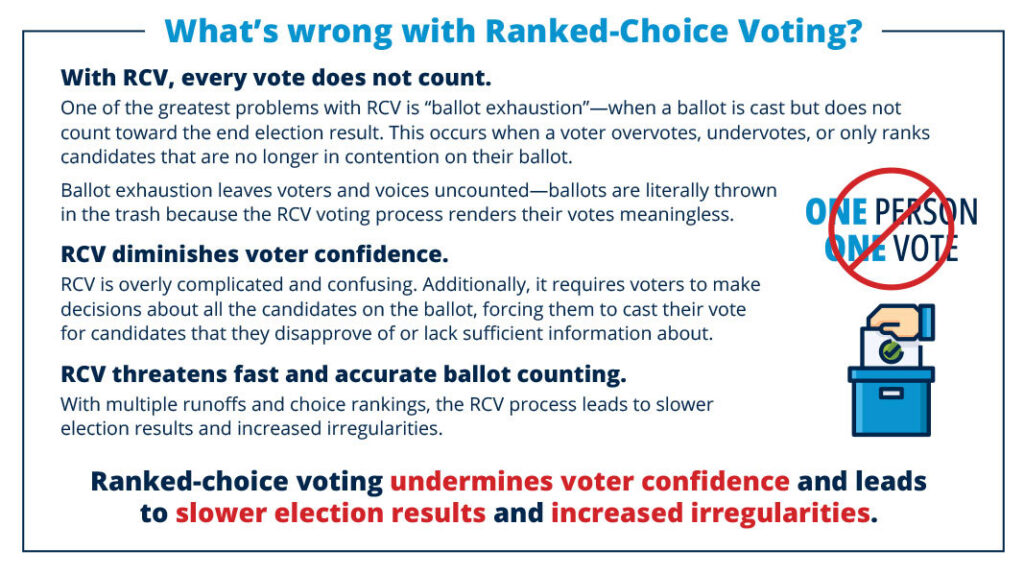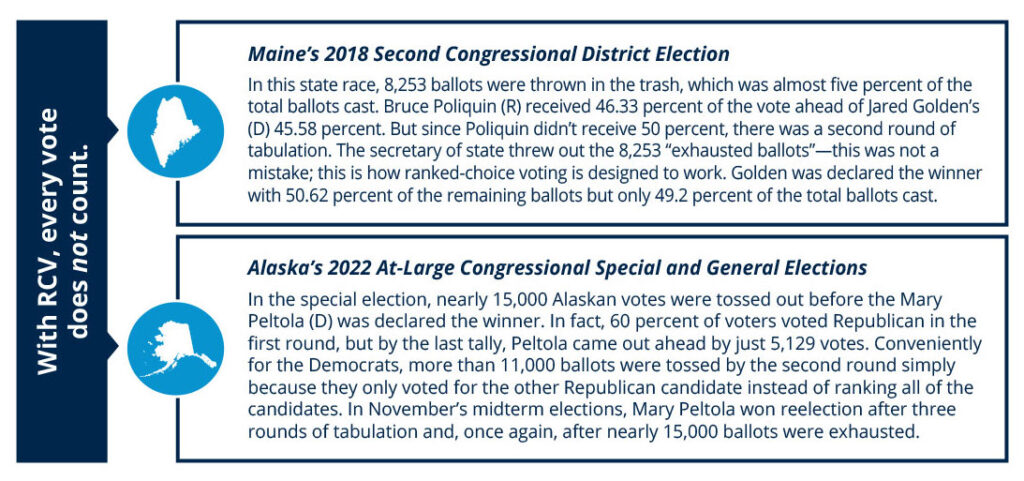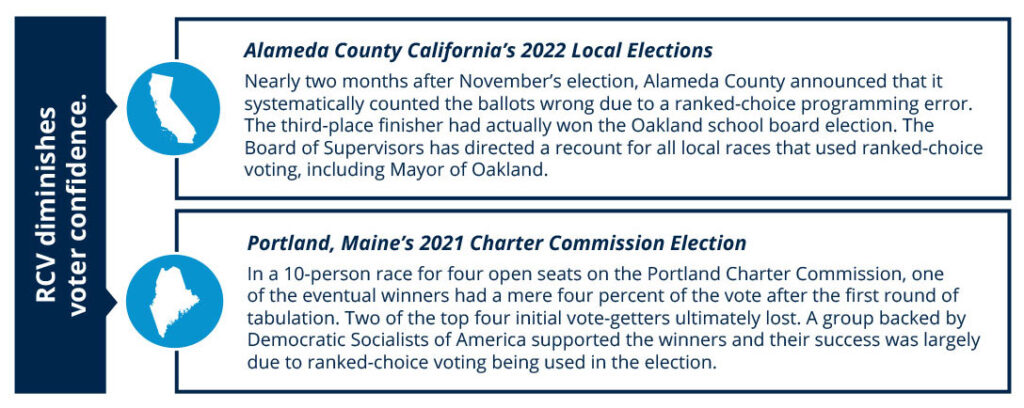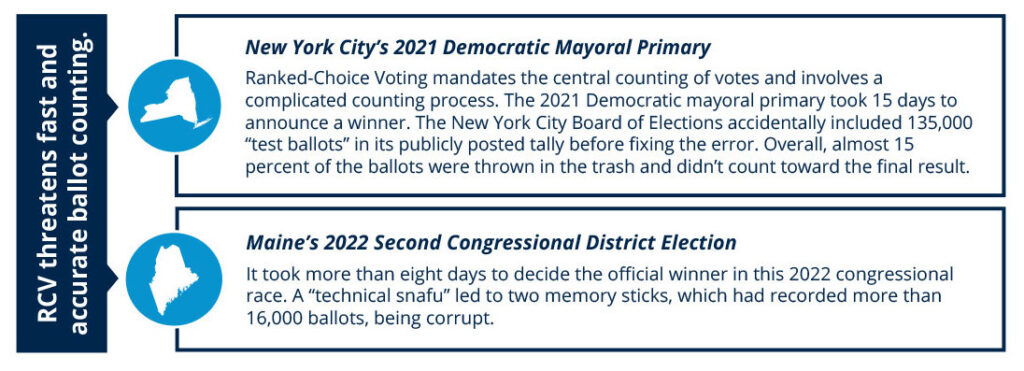The Truth About Ranked-Choice Voting
What is Ranked-Choice Voting?
American elections are traditionally and almost universally run using the “one-person, one-vote” system. When voters cast their ballots, they pick a single candidate in each race, and the candidate with the highest number of votes wins.
Under Ranked-Choice Voting (RCV), voters are forced to rank the candidates. If no candidate wins a majority, the race goes into multiple rounds of what is referred to as “instant run-off voting” until one candidate receives more than 50 percent of the remaining votes. It is anything but “instant” though—it is a complex process that has taken days or weeks in some cases. Using RCV, candidates who lost in the first round can win the election after multiple rounds of tabulation.
The Left has successfully pushed RCV in Maine and Alaska through ballot initiatives and implemented RCV in cities across the country, including New York, San Francisco, and Cambridge, Massachusetts. The RCV movement is gaining momentum and without an explicit ban, every state is vulnerable.


The RCV Track Record



